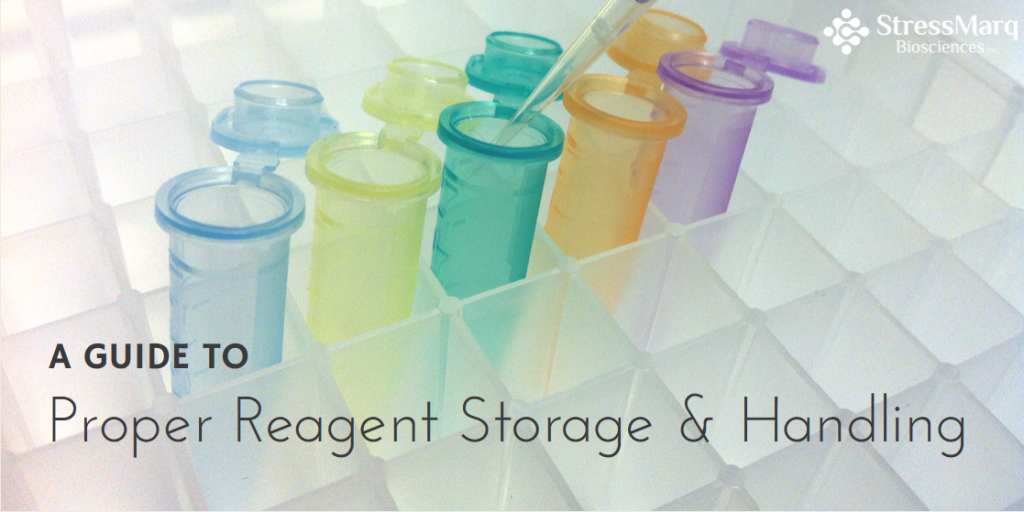Proper Reagent Storage and Handling
Many people don’t take the time to learn how to store and handle their reagents properly. This can lead to reagents that do not work as expected, and this can have a huge impact on your experimental results.
Here are 4 golden rules to follow to get the most from your expensive reagents:
1. Store them correctly
When you receive a new reagent, don’t leave it sitting on your desk for hours or days. Check out the datasheet to see how/where it is supposed to be stored, then do it.
You may think you know how a particular type of reagent is supposed to be stored, but not all products are the same.
Most antibodies and proteins require -20⁰C or -80⁰C, so you may think all antibodies go in the -20⁰C, right? Wrong! Antibodies that have been conjugated need to be stored between 2-8⁰C; that includes conjugated primary and secondary antibodies. Always check the datasheet.
Did your fluorescent antibody or dye come in a clear plastic tube, enabling you to see the beautiful shimmering colour? Whoops!
You should transfer it to an amber (brown) vial or wrap it in tin foil to prevent it from getting photobleached.
Even in the freezer, repeated exposure to light when the door is opened can damage your dye.
2. Aliquot, aliquot, aliquot… x 100
Make time when you first receive the product to measure out aliquots. This avoids freeze thaw cycles that can damage your antibodies and proteins.
Also, in the event of contamination, only one aliquot will be ruined, not the whole amount.
Aliquoting also allows for easy sharing of reagents with other labs without giving away the whole vial, which you may never see again! Sharing now also allows you to expect reciprocal sharing in the future!
3. Don’t double dip
Unless you prepared one-time use aliquots, you may risk contaminating your vial by using a pipette tip that has already been dipped into another solution. So discard it, and use a fresh tip every time.
4. Optimize!
The recommended dilution listed on a datasheet from a manufacturer is usually just that, a recommended dilution.
It isn’t the lowest amount possible that you can use and still see results. It is the concentration at which most users should start to optimize from.
You need to test out every antibody, and every new lot number, to see what is the best dilution for your species, tissue, and application.
It is likely that you can use a much lower concentration than recommended by optimizing the protocol beforehand.
Need some new reagents?
Check out our extensive product line of high-quality antibodies, proteins, assay kits, and small molecules.


Leave a Reply